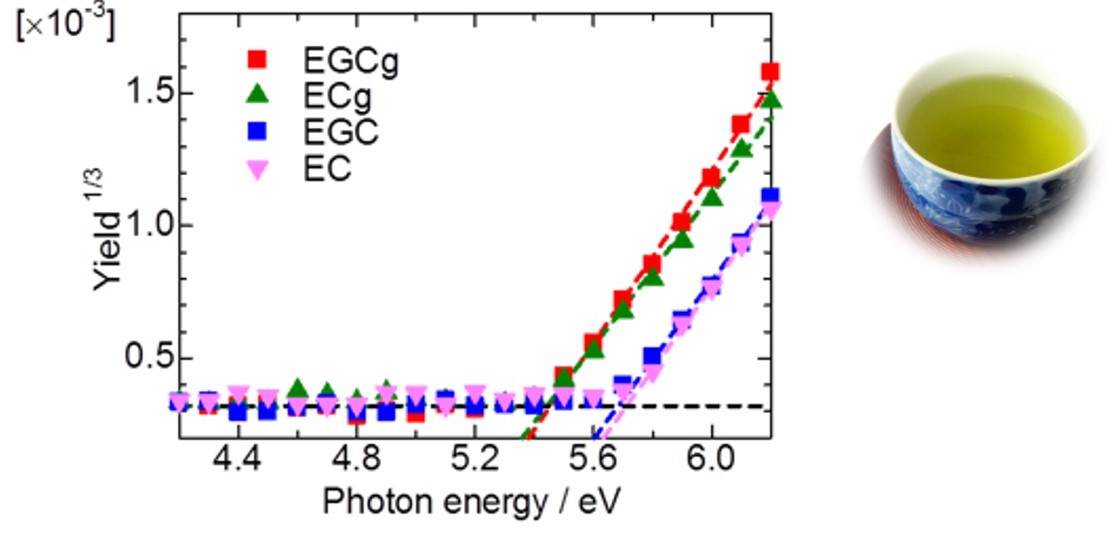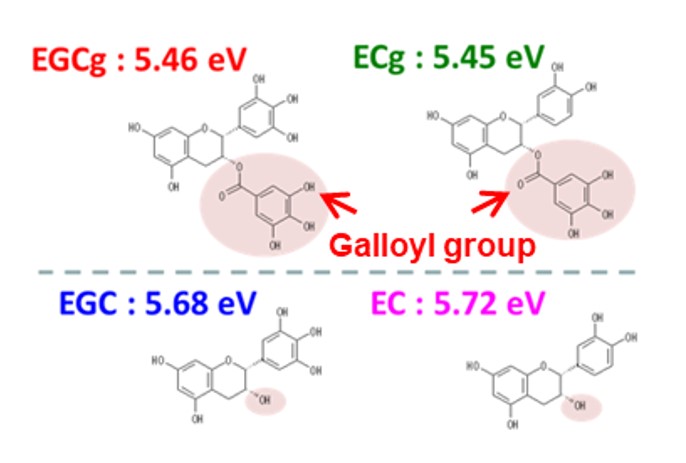Photoemission Yield Spectroscopy in Air, short for PYSA (AC series),
made by Riken Keiki, which can run in air, is able to analyze whatever liquid or powder. Recently,
the ingredient of green tea, which is known as catechin, is reported to be analyzed with AC series.
As shown in the following figures, samples was divided into 2 groups, with or without galloyl group.
Generally, it is known that catechin with galloyl would have higher reactivity. And with a experimental method,
the fact was proved that samples with galloyl group showed a similar curve of ionization potential.
AC series can be used to obtain the in-situ condition of electrons. Not only liquid,
but also those changing work function which is caused by surface treatment can be observed.
Therefore, novel views can be observed which may not be seen in vacuum.
Sample powder mixed with water :500 mg/L
※ referred to commercial tea bottles


Analysis of catechin [1]
[1] D. Yamashita and A. Ishizaki, Anal.Sci., 32 (2016) 577